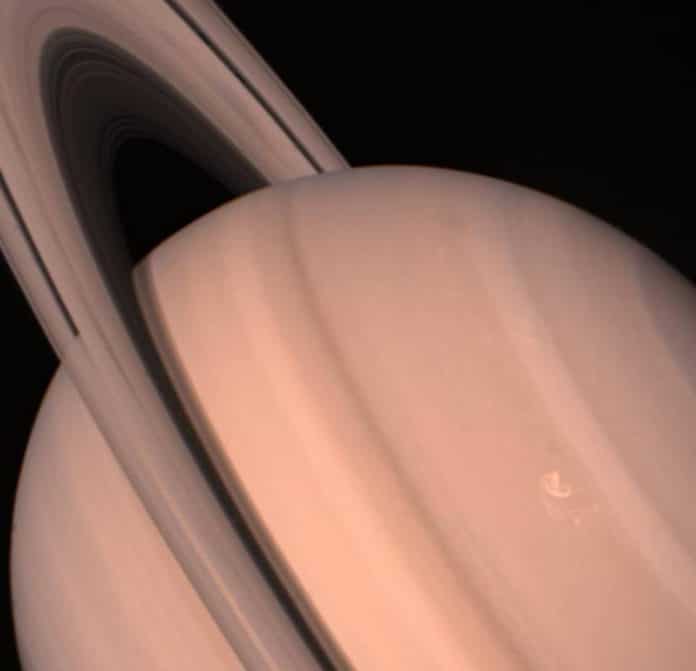It is quite challenging to study the interior structures of giant gaseous planets such as Saturn. But a new study advances the effort to map Saturn’s hidden regions.
Scientists from the Johns Hopkins University created simulations of Saturn’s interior, suggesting that a thick layer of helium rain influences Saturn’s magnetic field.
The simulation indicates that Saturn’s interior may feature higher temperatures at the equatorial region, with lower temperatures at the high latitudes at the top of the helium rain layer.
Co-author Sabine Stanley, a Johns Hopkins planetary physicist, said, “By studying how Saturn formed and how it evolved, we can learn a lot about the formation of other planets similar to Saturn within our solar system, as well as beyond it.”
Lead author Chi Yan, a Johns Hopkins Ph.D. candidate, said, “Detailed measurements of the magnetic field gleaned from the last orbits of NASA’s Cassini mission provide an opportunity to understand better the planet’s deep interior, where the magnetic field is generated.”
Using data collected from Cassini’s mission and then fed it into a powerful supercomputer to generate simulations similar to those used to study weather and climate. This helps scientists studying essential ingredients significant for producing the dynamo—the electromagnetic conversion mechanism—that could account for Saturn’s magnetic field.
Stanley said, “One thing we discovered was how sensitive the model was to particular things like temperature. And that means we have a fascinating probe of Saturn’s deep interior as far as 20,000 kilometers down. It’s a kind of X-ray vision.”
They also discovered that there could be a slight degree of non-axisymmetry that exists near Saturn’s north and south poles.
Stanley said, “Even though the observations we have from Saturn look perfectly symmetrical, in our computer simulations, we can fully interrogate the field.”
Journal Reference:
- C. Yan et al. Recipe for a Saturn‐Like Dynamo. DOI: 10.1029/2020AV000318
